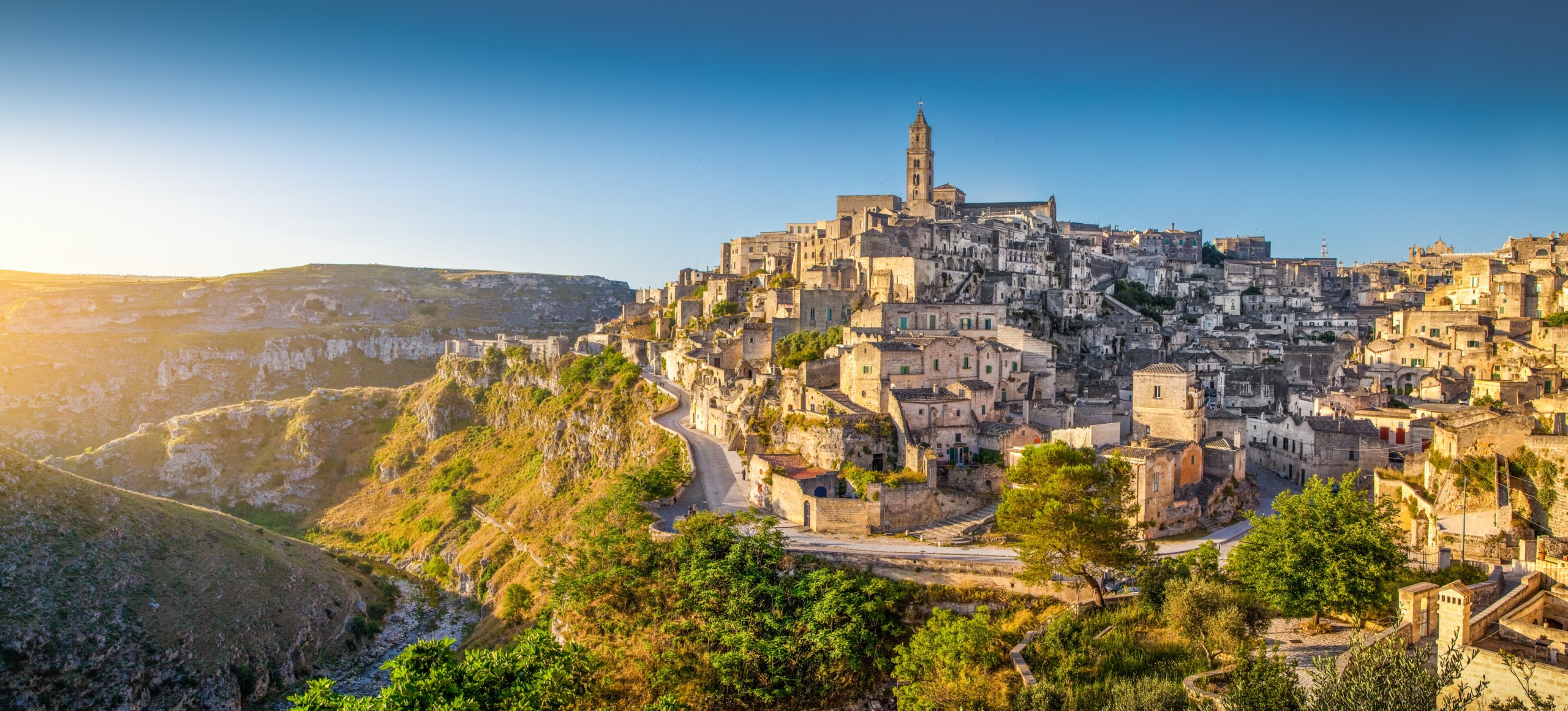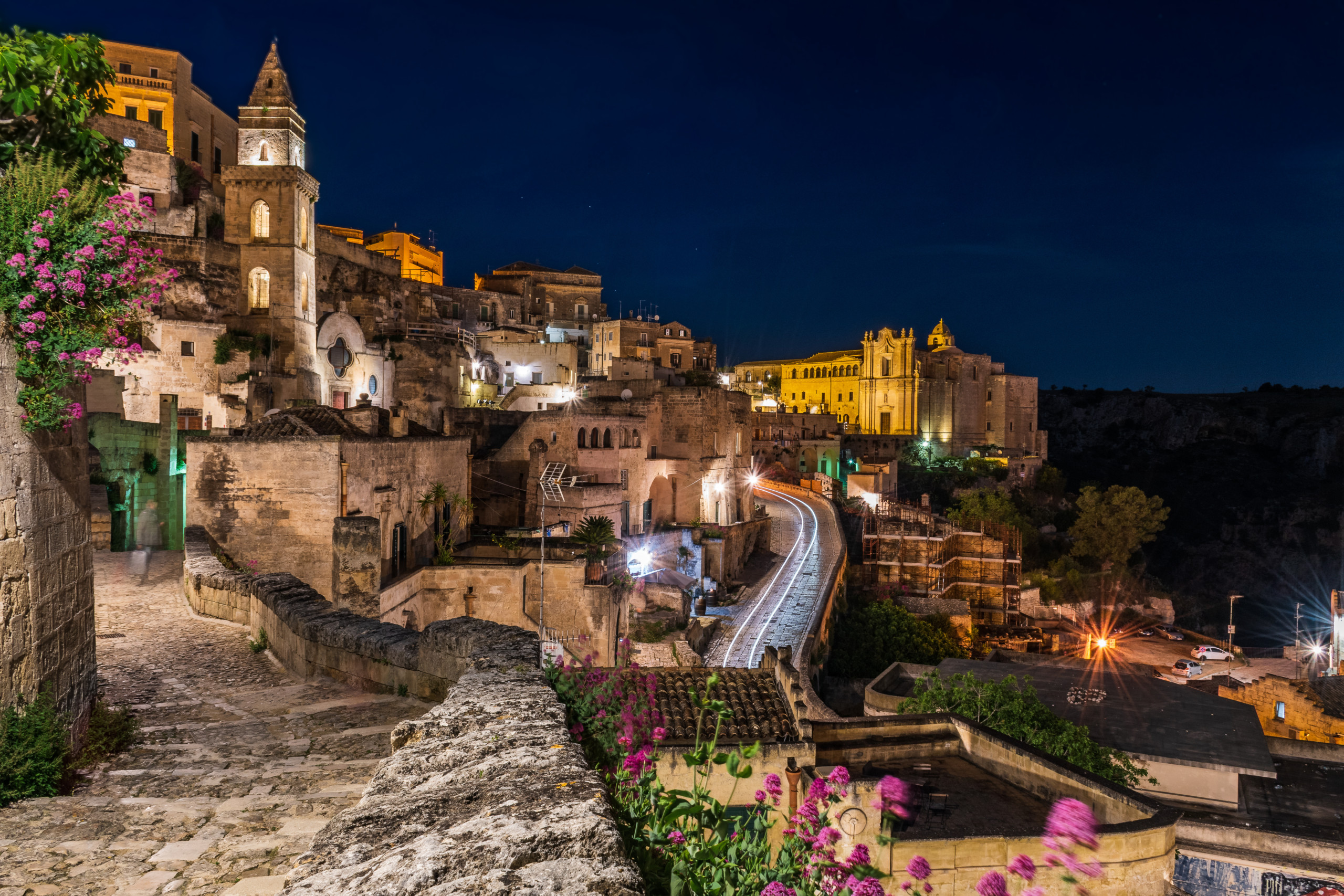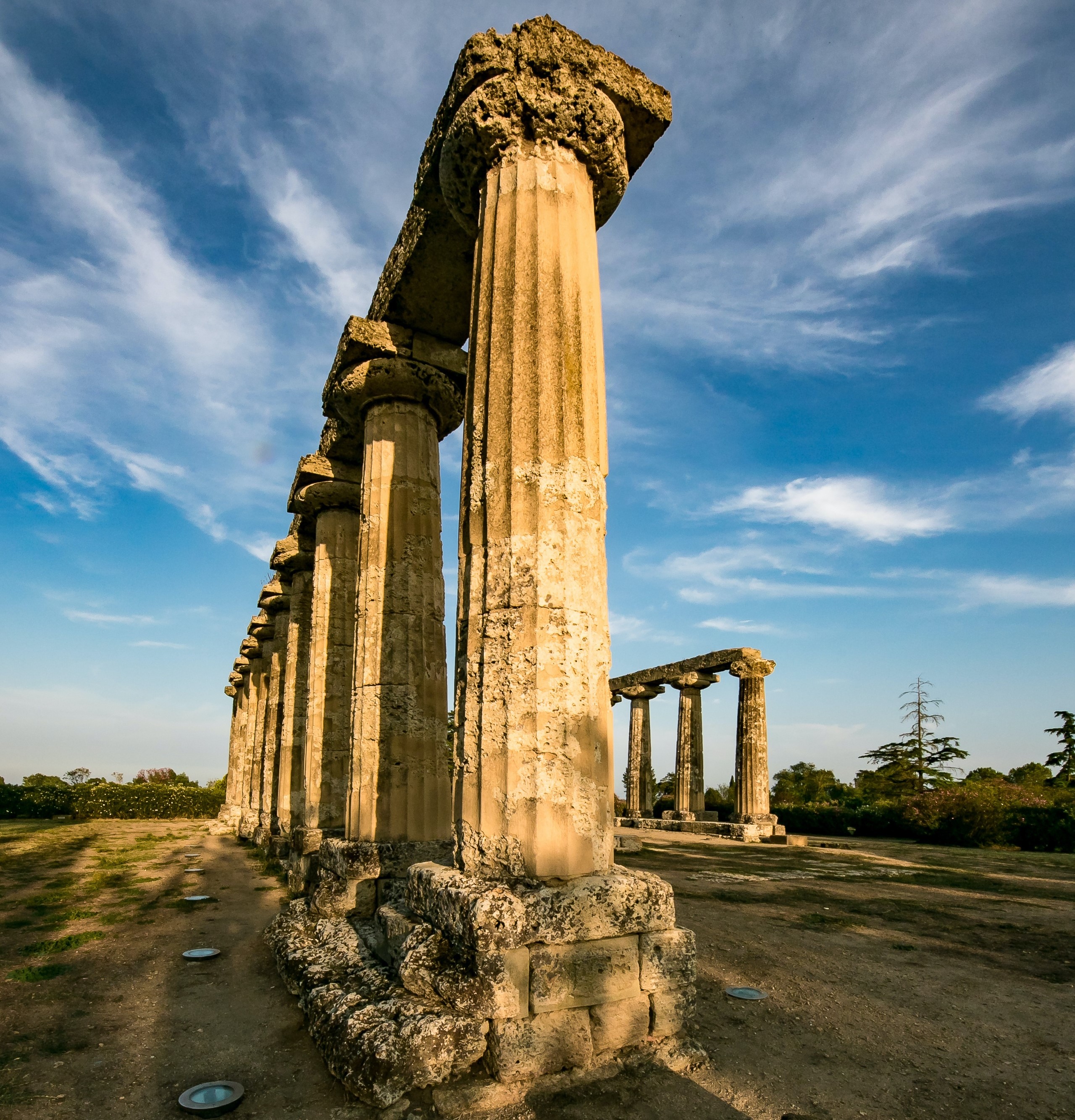A Region Less Traveled
Basilicata. The provinces of Campagna to the north, Puglia to the east and Calabria to the southwest frame this province. The Gulf of Taranto forms what many refer to as the “arch” of the boot to the south. Between those political and geographic boundaries lies this large and little-known province of treasures.
History of Struggle
For both fortunate and unfortunate reasons, the city of Matera became a symbol of the entire province of Basilicata. Most Italians saw it as a vergogna — a shame. The area suffered after the publication of Carlo Levi’s book, Christ Stopped at Eboli. Levi, exiled by the Fascists to Basilicata, used his time to write this searing portrait of the province. The book passingly acknowledged the grinding poverty in the South. His work brought direct attention to the way people lived in the sassi. These districts of stone caves carved along the walls of a ravine below the upper town have no running water or sanitary facilities.
In 1950, in response to Levi’s book and increasing political pressure, Prime Minister Alcide De Gasperi visited the city. In 1952, he decided to move the majority of residents out of their sassi and into new developments outside the city limits with disastrous results. The city emptied, leaving behind only a few stalwarts.
This decision threw residents of Matera — who at least had a home, however meager — into chock-a-block apartments in post-war ugly, concrete, high rises. The adamant few who remained behind organized, promising to keep the incredible 9,000-year history of the city and province alive.
Historic Roots and Rebirth
Today, Matera stands as a symbol of resurrection. From those centuries of poverty, the city is now a UNESCO World Heritage site and, in 2019, became the European City of Culture. Not all parts of the sassi have been restored and revitalized; many of the cave structures remain empty. To those who live here, however, those empty spaces offer a symbol of hope.
When the archaeological digs at Pompei and Herculaneum began, they found an astoundingly rich and varied history. The success of these digs inspired further research in other regions, such as Basilicata. In the years since 1952, researchers have discovered more than 150 rupestrian (rock-carved) cave churches. They contain treasures of ancient Byzantine frescoes left by those of faith who worshiped there. Films like Pier Paolo Pasolini’s The Gospel According to St. Matthew (1964) filmed in Matera and elsewhere in the province.
Province of Promise
Today, the region enjoys nothing short of a miraculous rebirth. Visit Metaponto, an ancient Greek site, and stand in the shadow of the remains of huge temples stand amidst long abandoned fields. Experience the thermal waters near the mountain village of Latronico or stroll the beautiful streets of Potenza. Explore the vast number of churches in Maratea (not to be confused with Matera), on the Tyrrhenian coast.
The region has much to offer. Food? Consider that this area of the peninsula carries in its recipes the impact of the Ostrogoths, Arabs, Romans, Greeks, Spaniards, and Byzantines. Now, imagine fresh olive oil, fabulous earthy wines, vistas across innumerable hills and mountainsides. Thus, you can begin to understand the bright flavors and unforgettable textures of the tavola Basilicata.
A fabulous one-night stay at Francis Ford Coppola’s hotel, Palazzo Margherita in the village of Bernalda, offers an unforgettable experience. The tiny village of Bernalda is a treasure. The hotel is a fabulous retreat where food and service reach levels you find in much larger cities across Italy.
The morning I left the hotel, the young man who helped me with luggage told me his father was from Matera, about forty-five minutes north. “He was from a poor family. We love sharing our history with visitors. We struggle, but this is our heritage, our land. Please come back,” he said. “We need you.”



